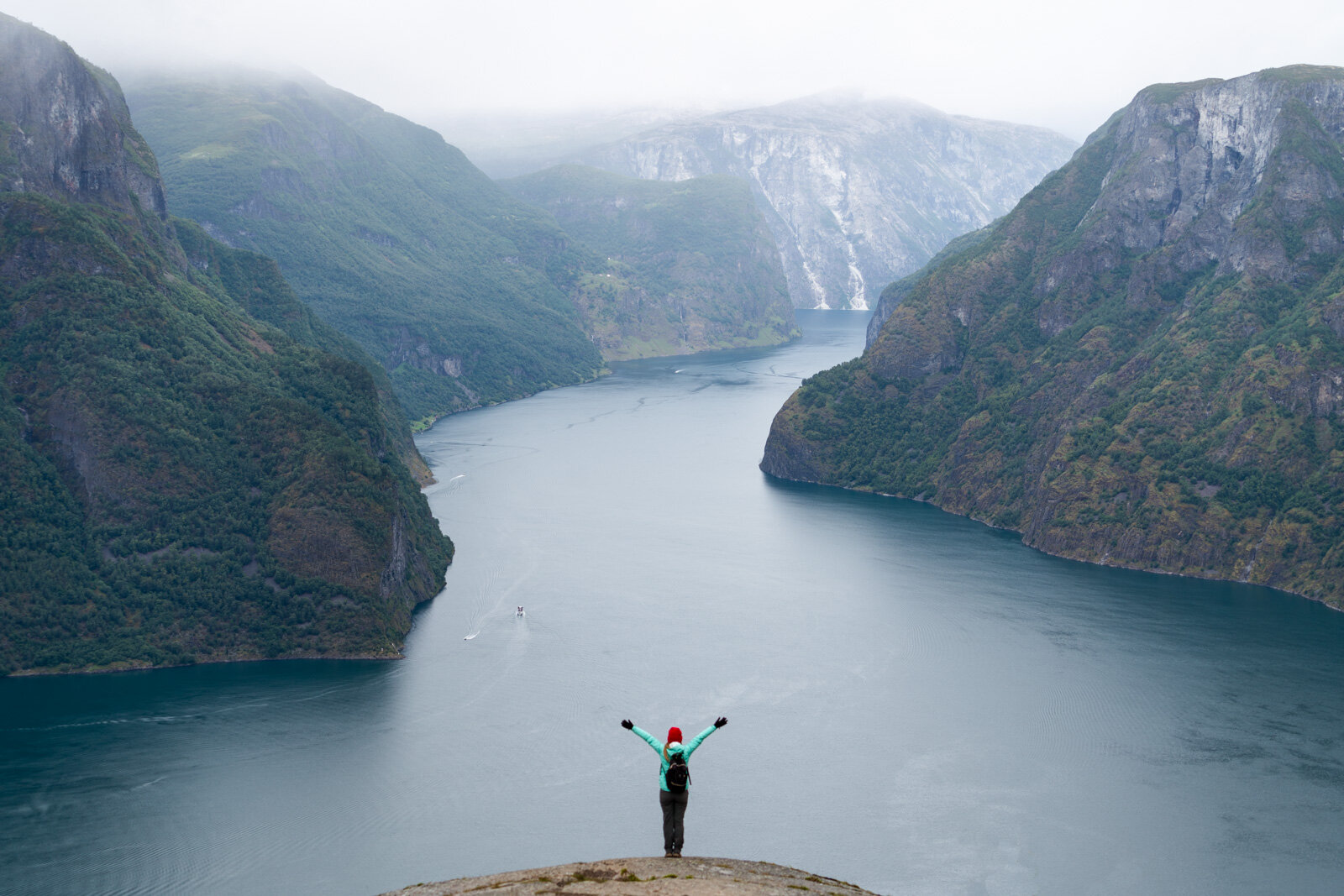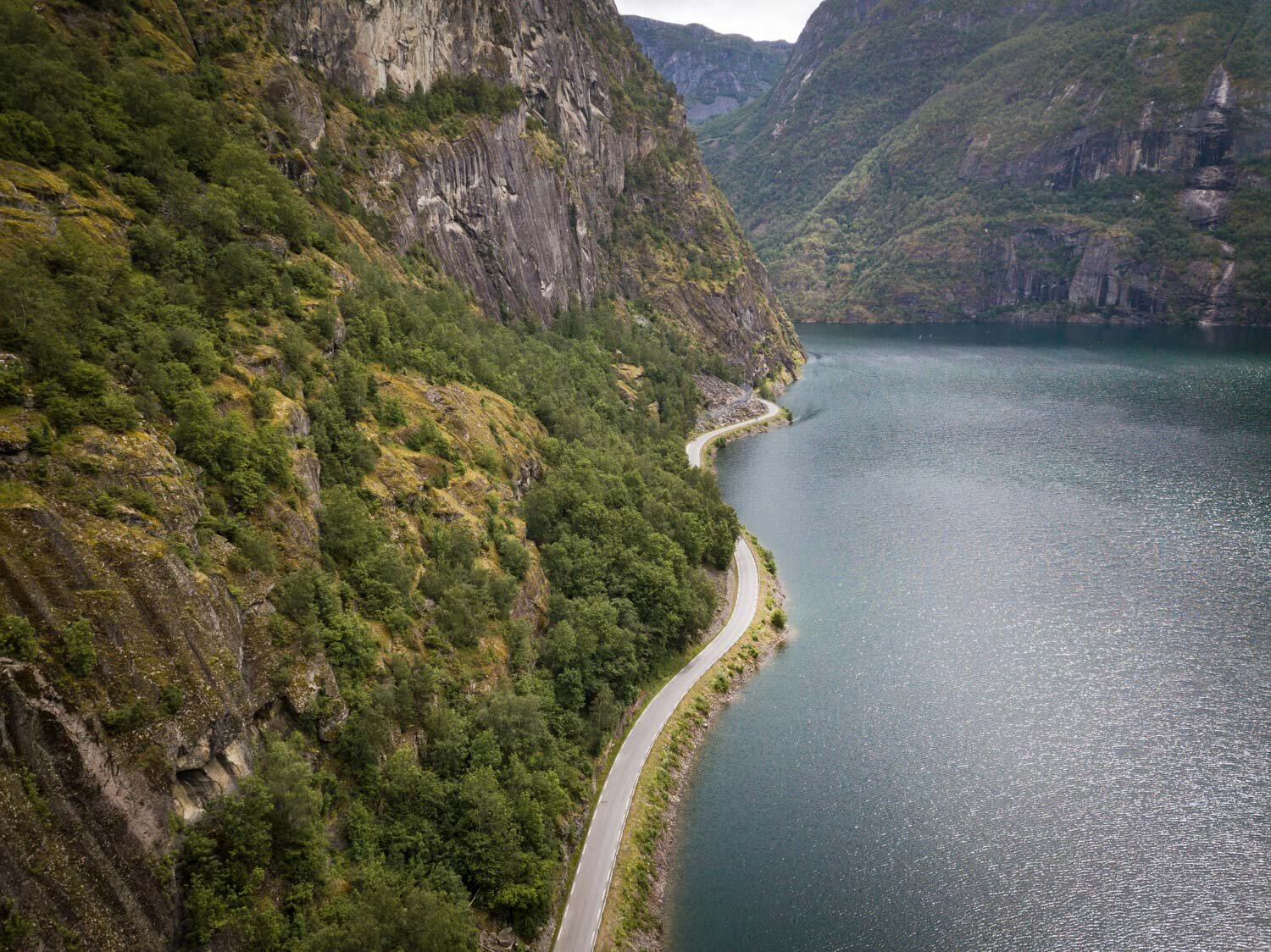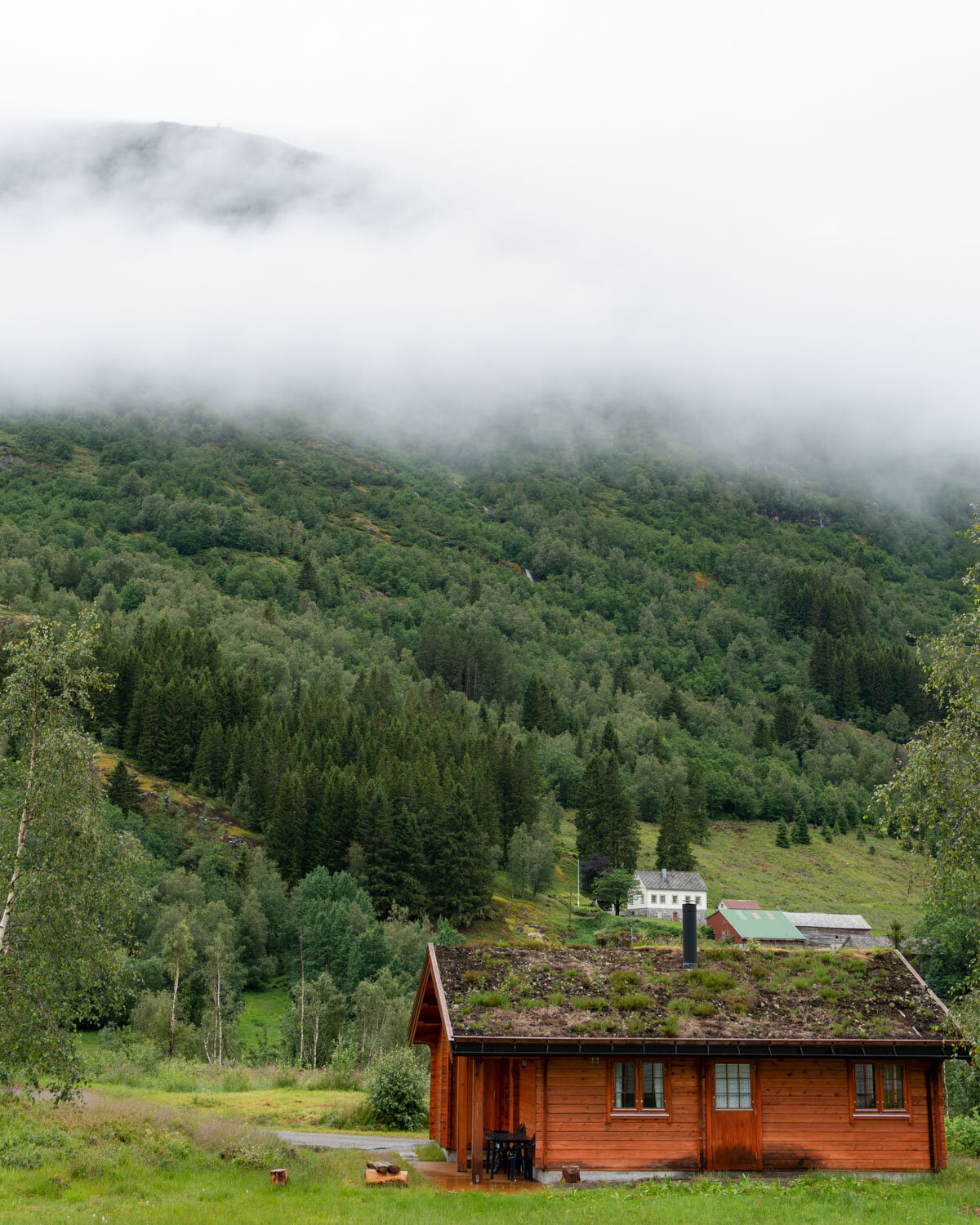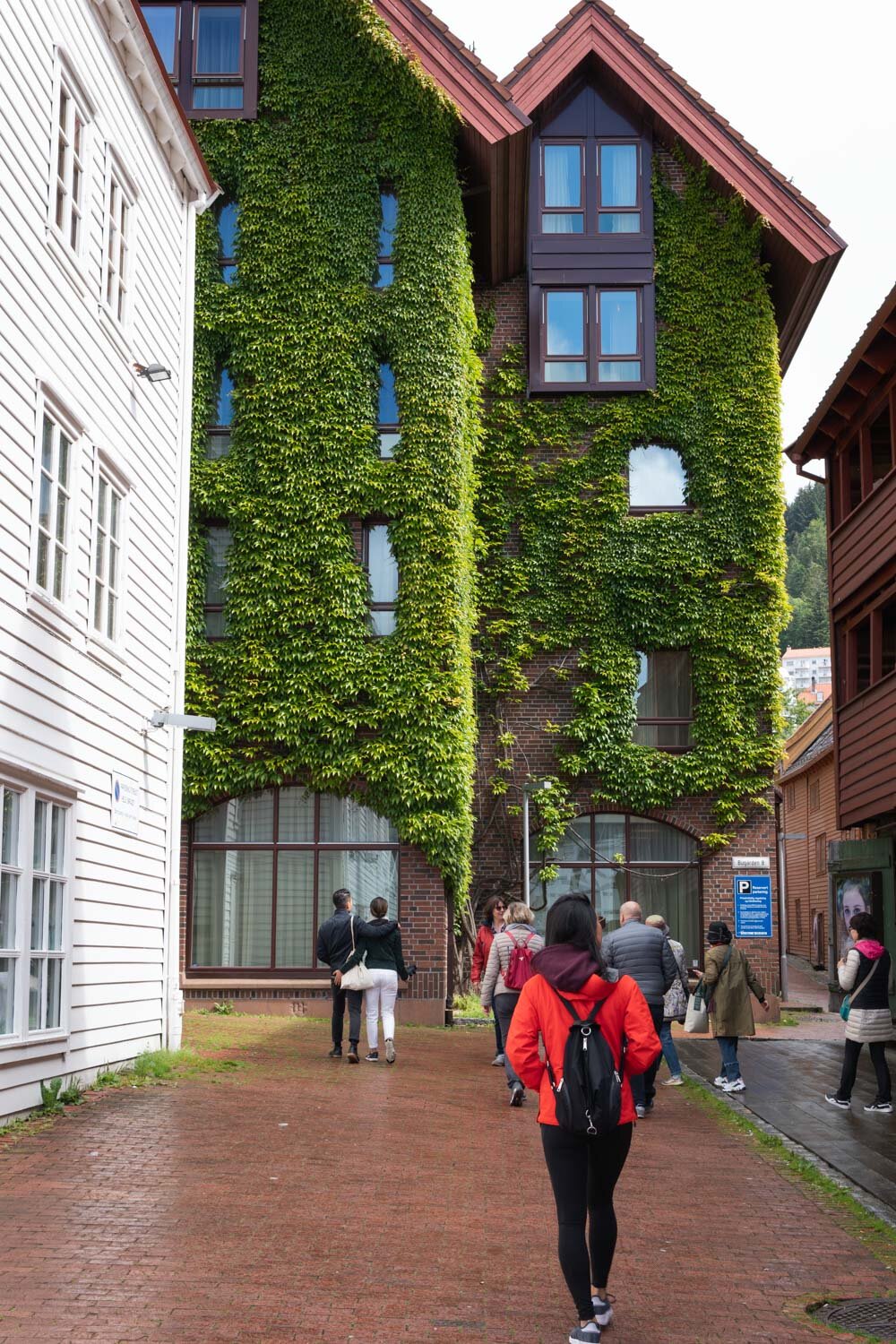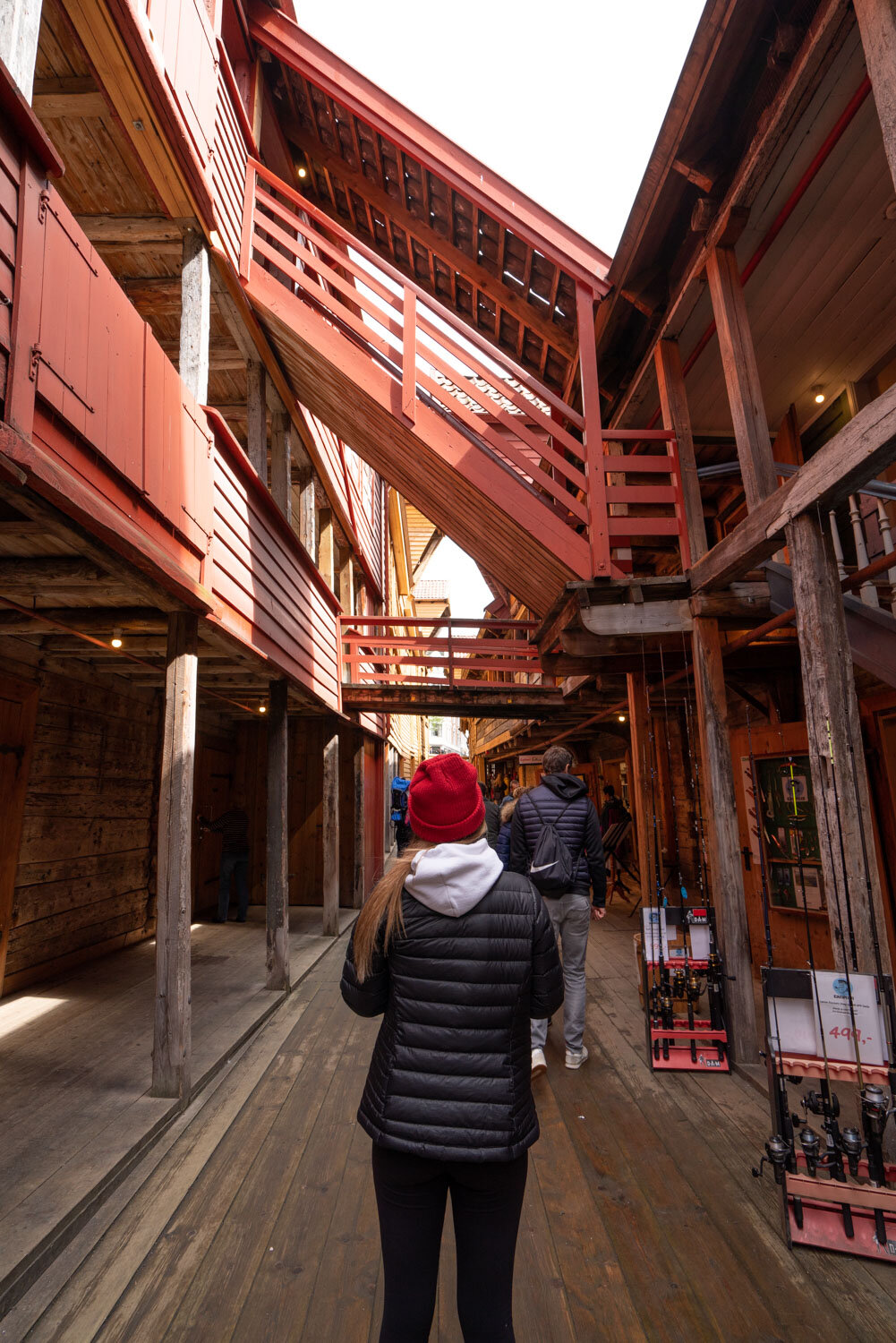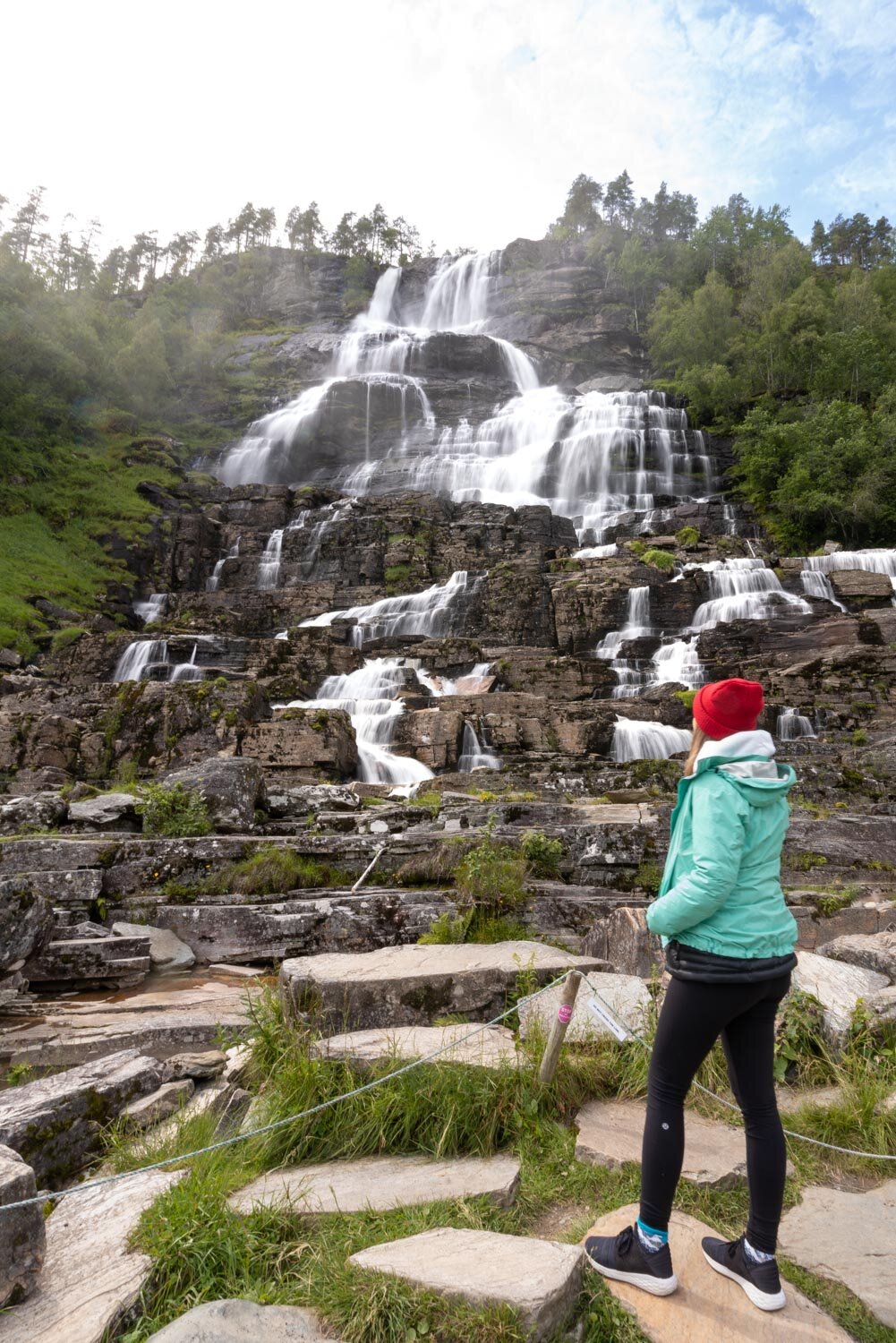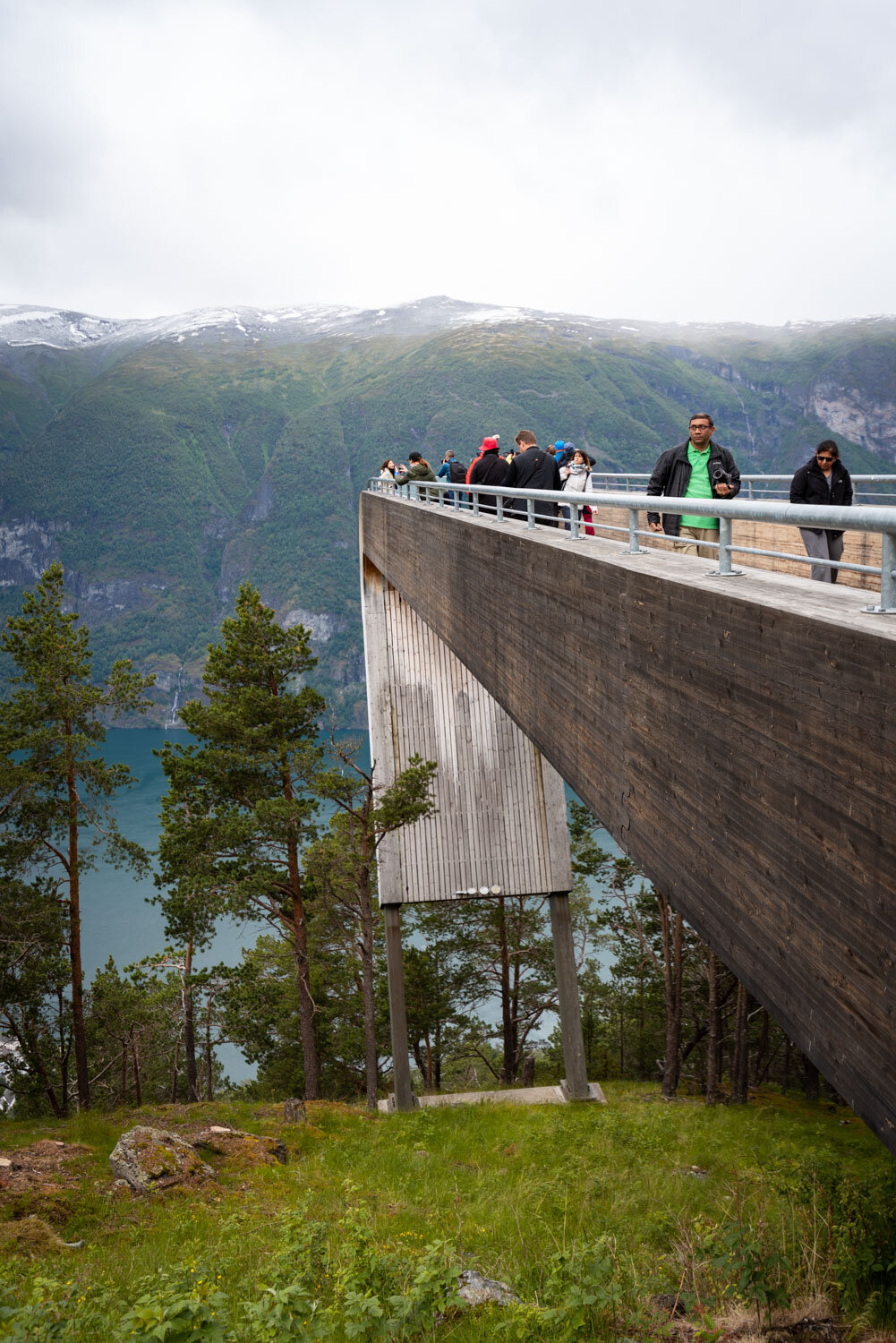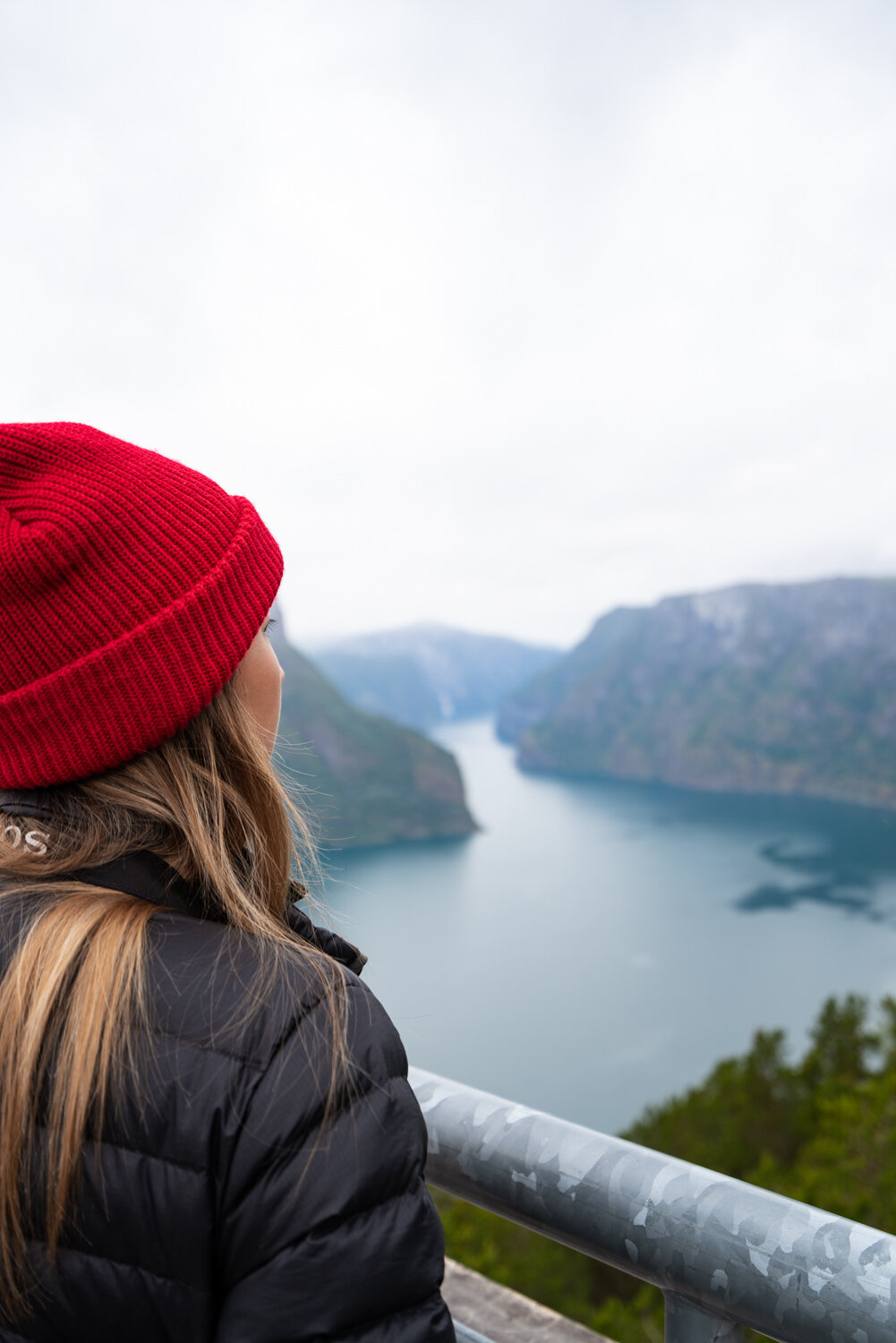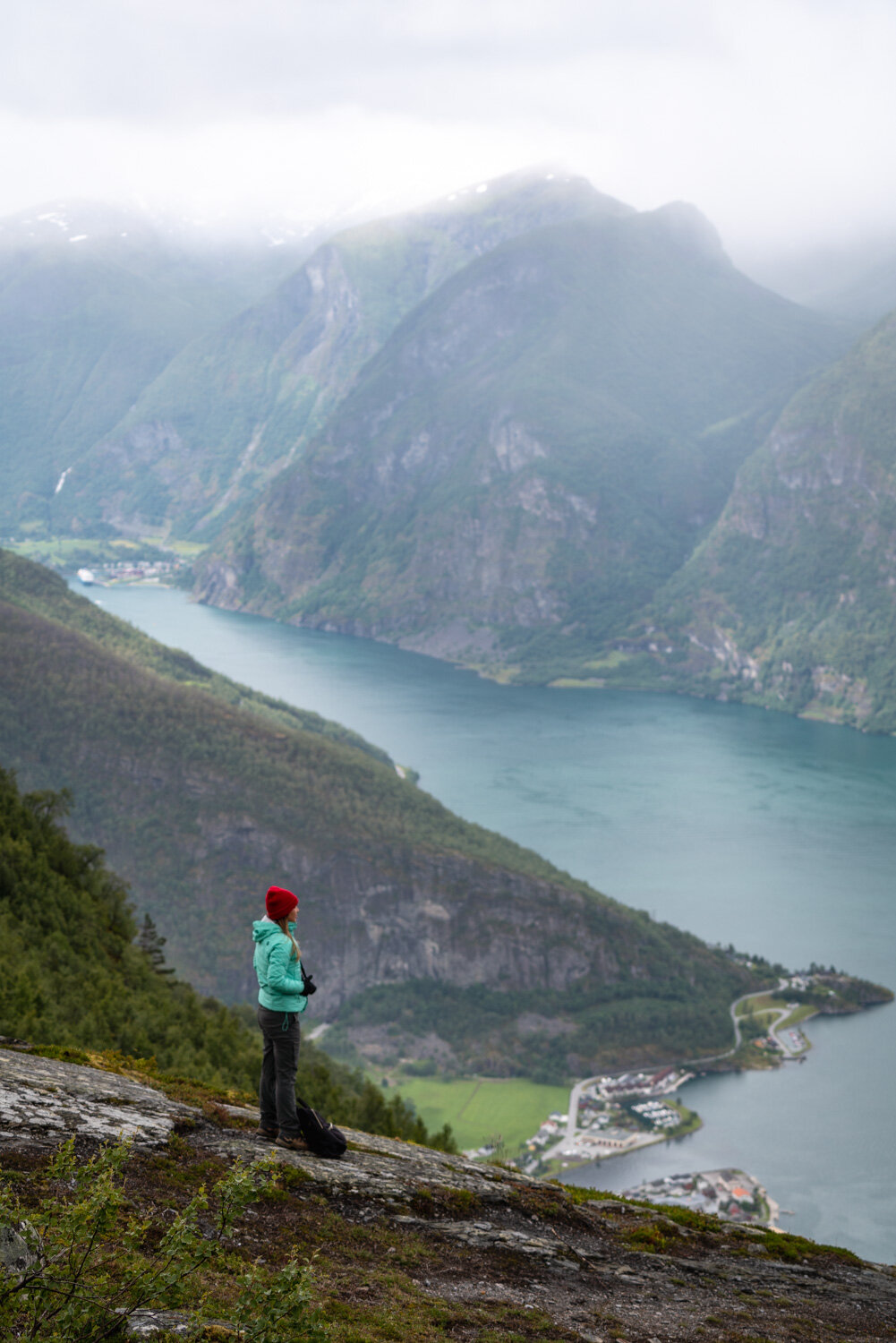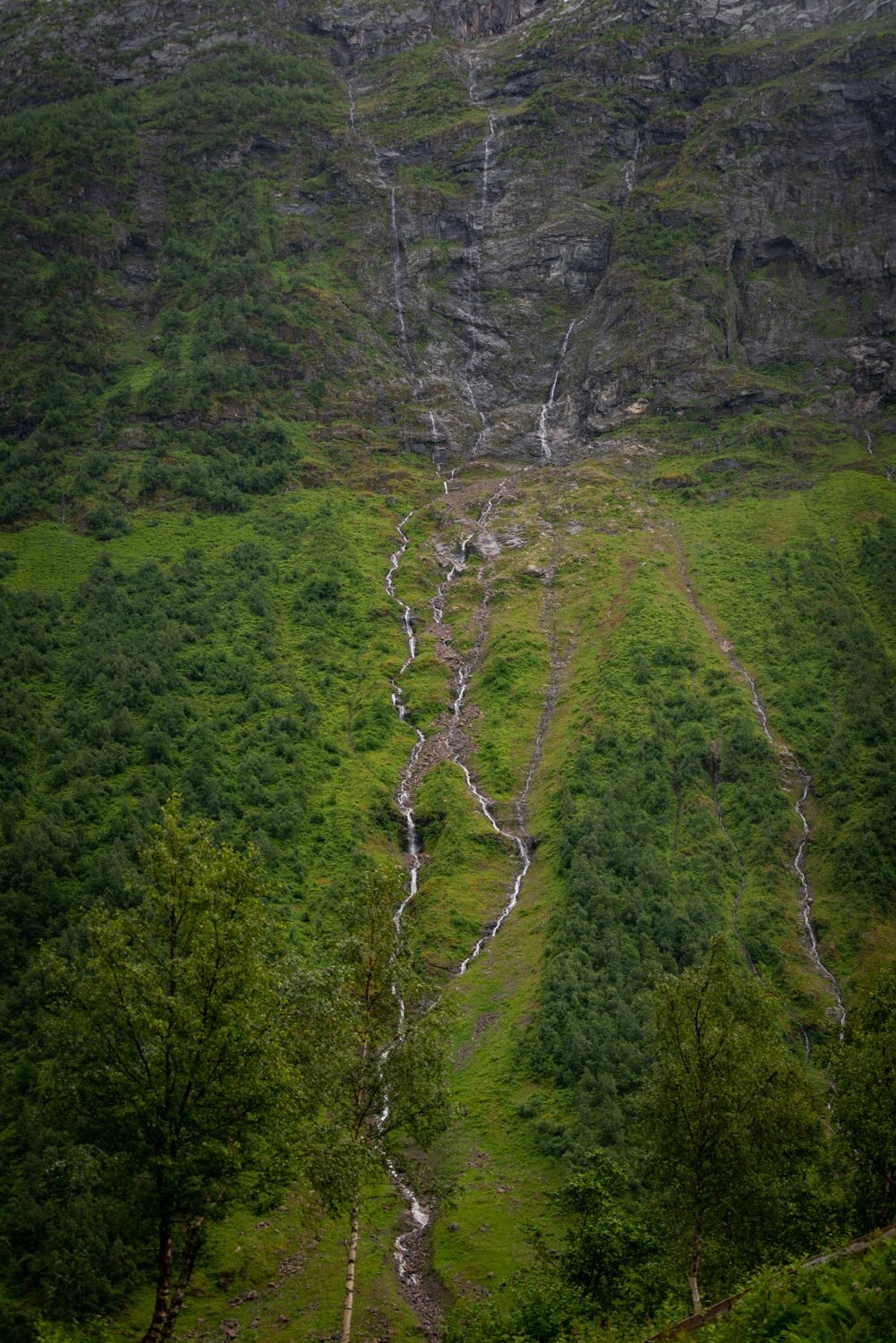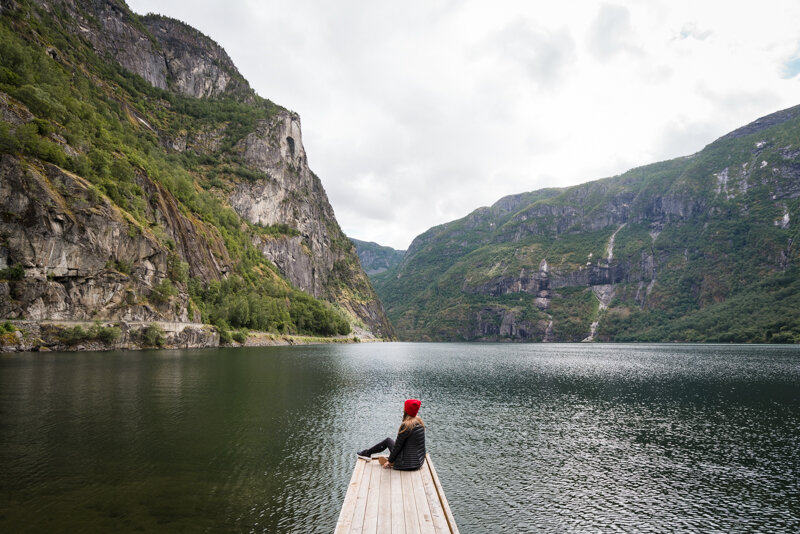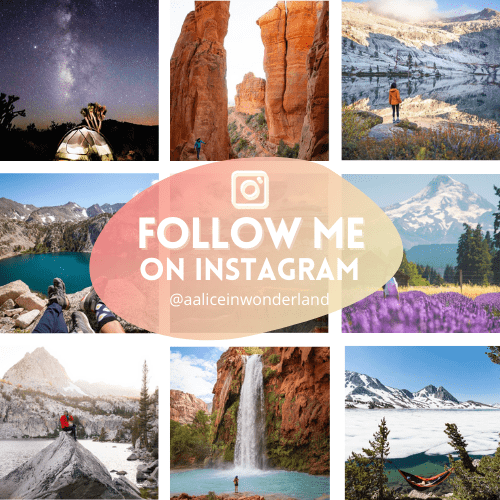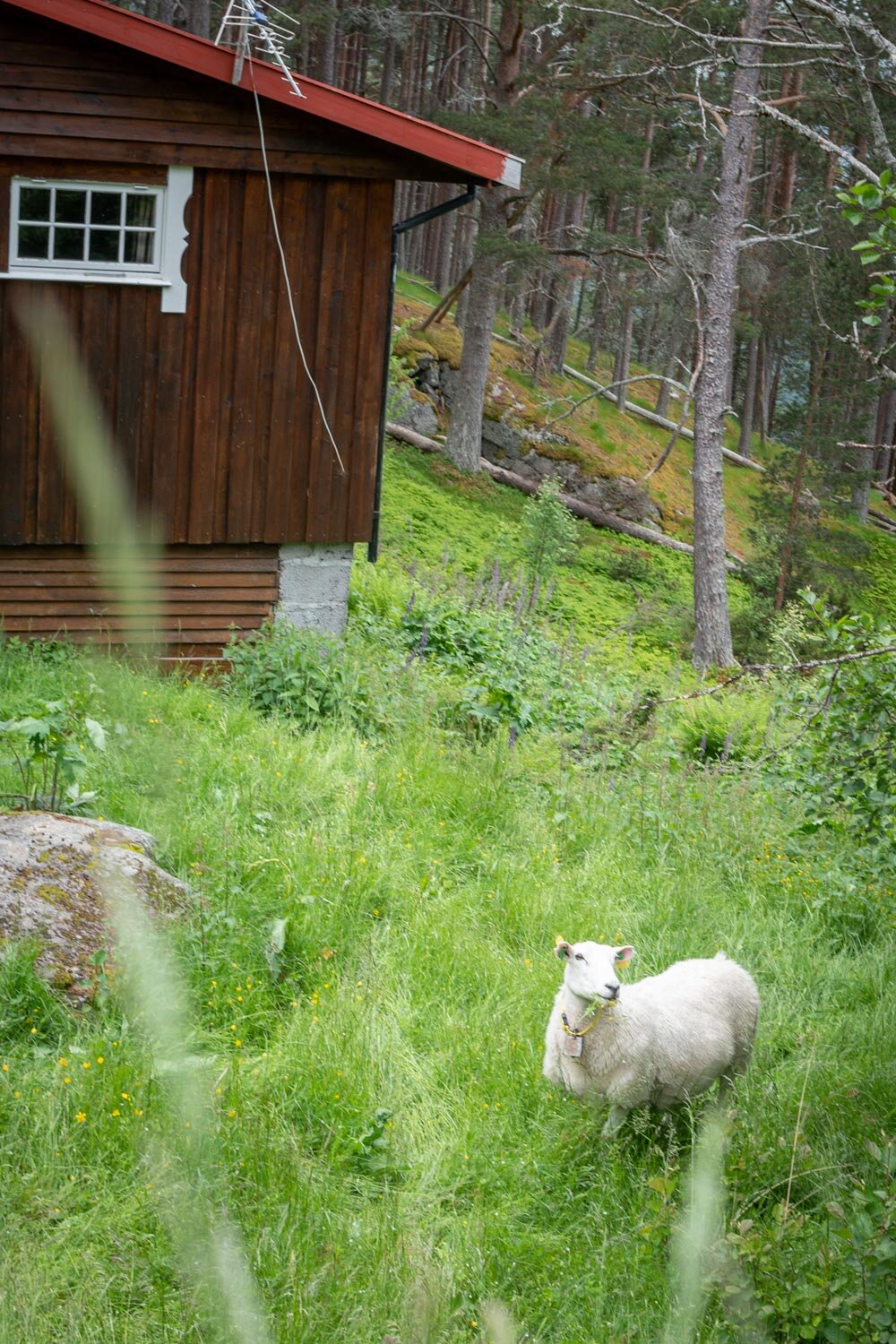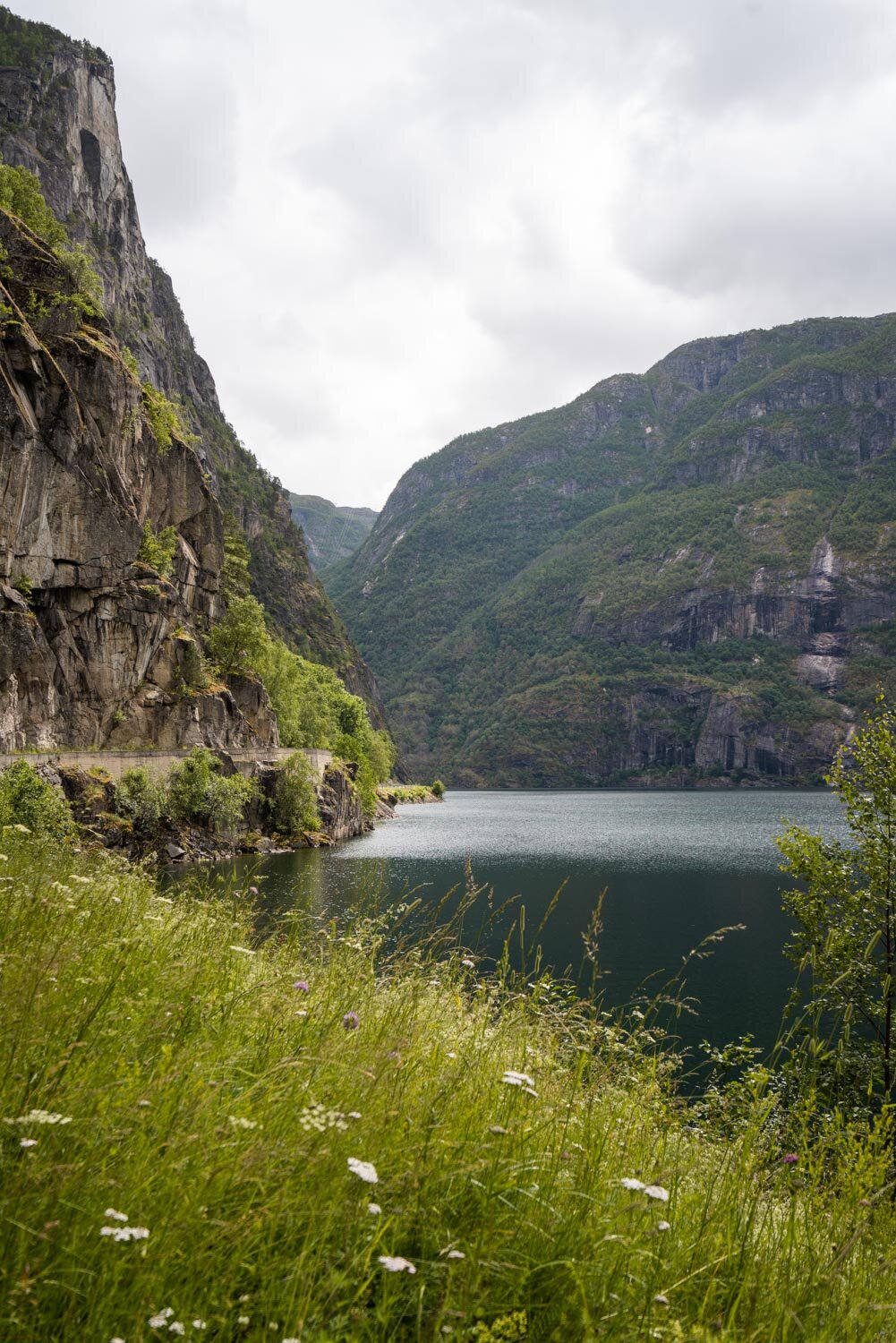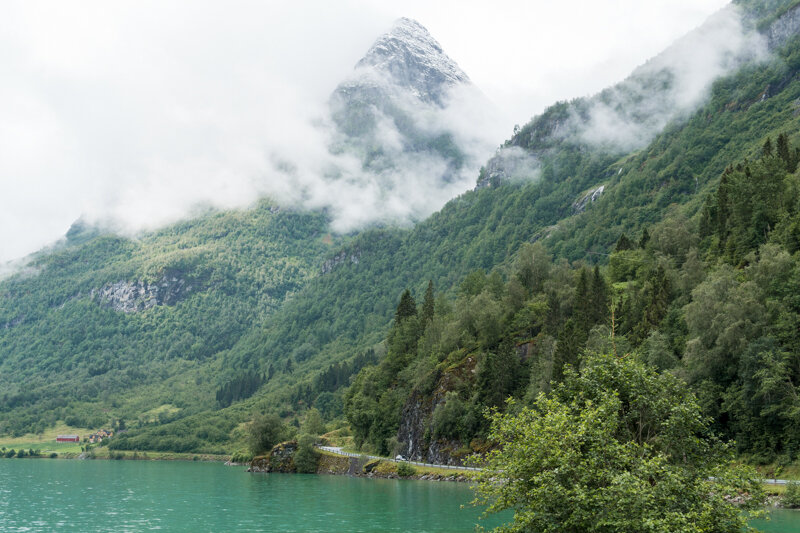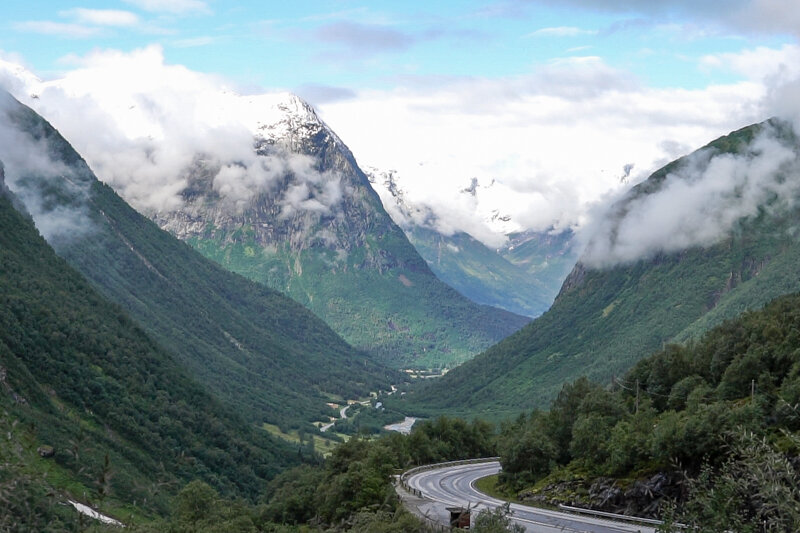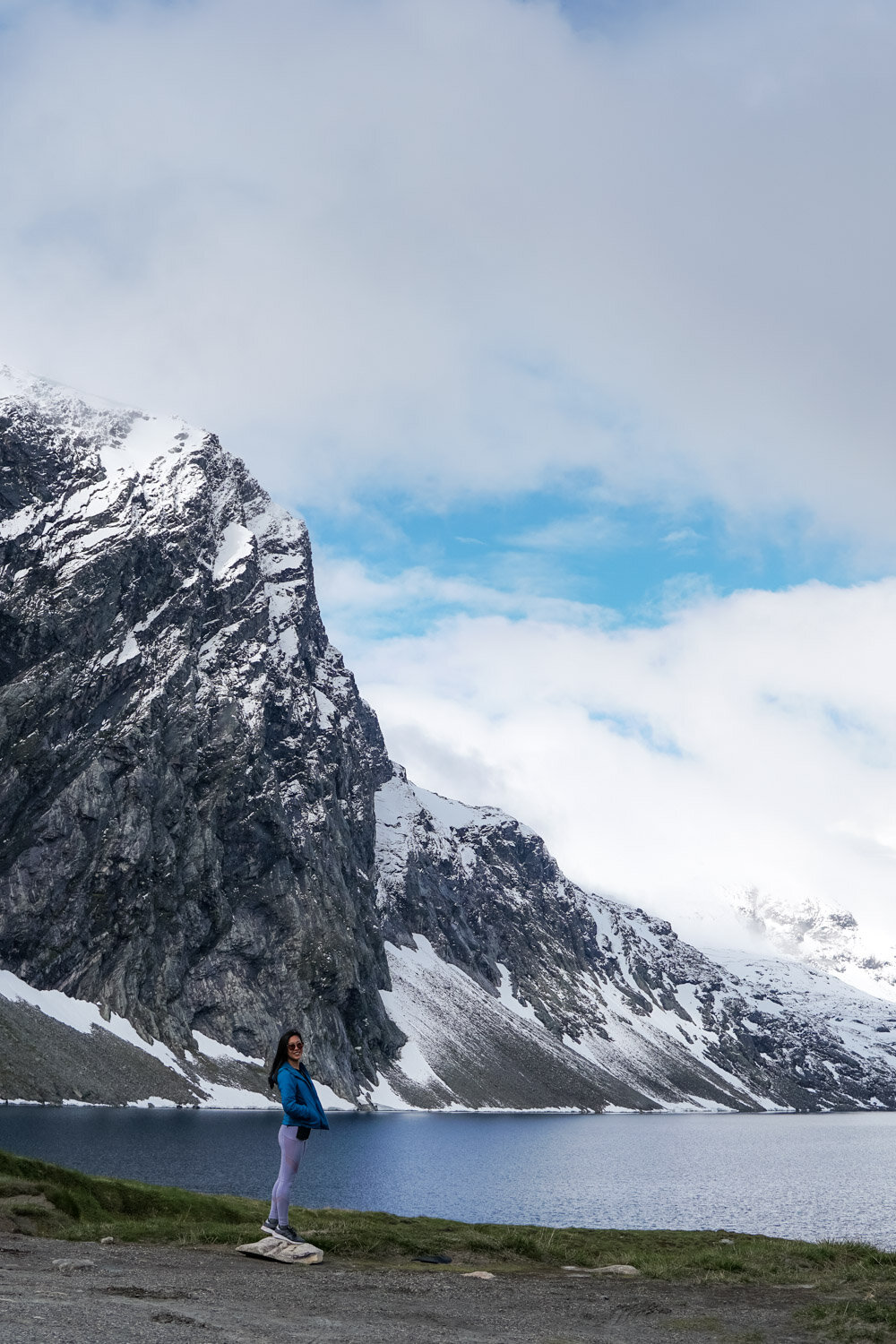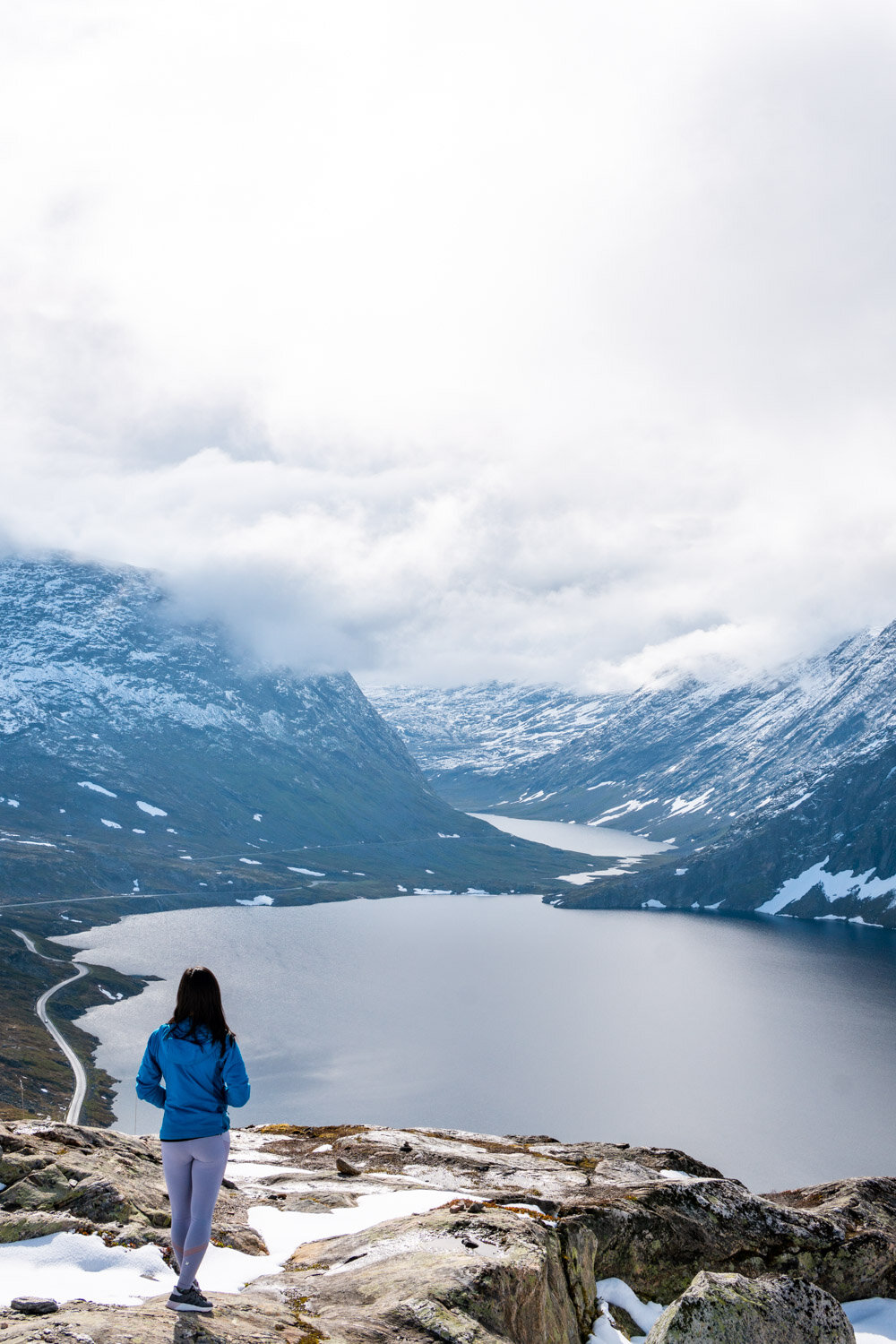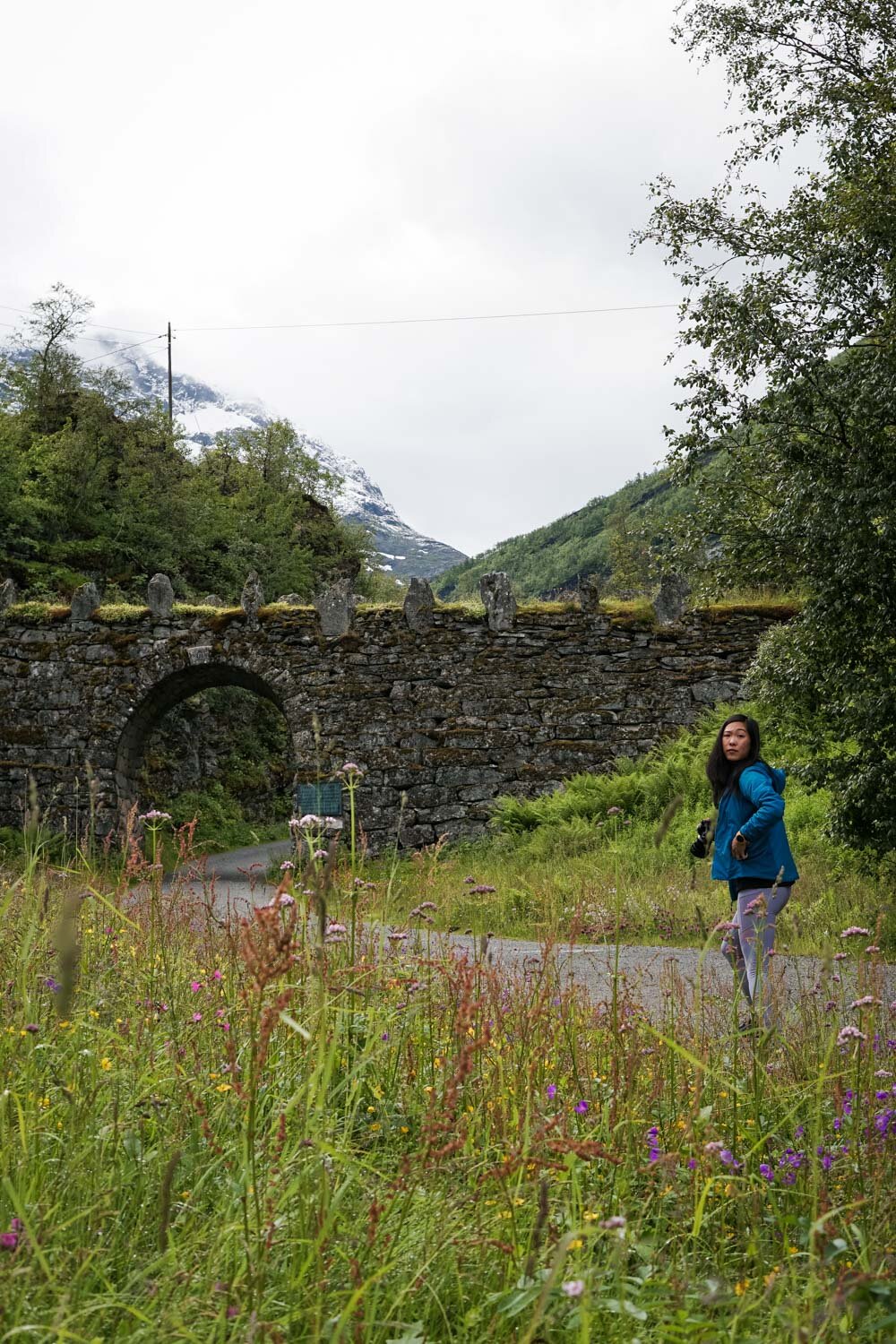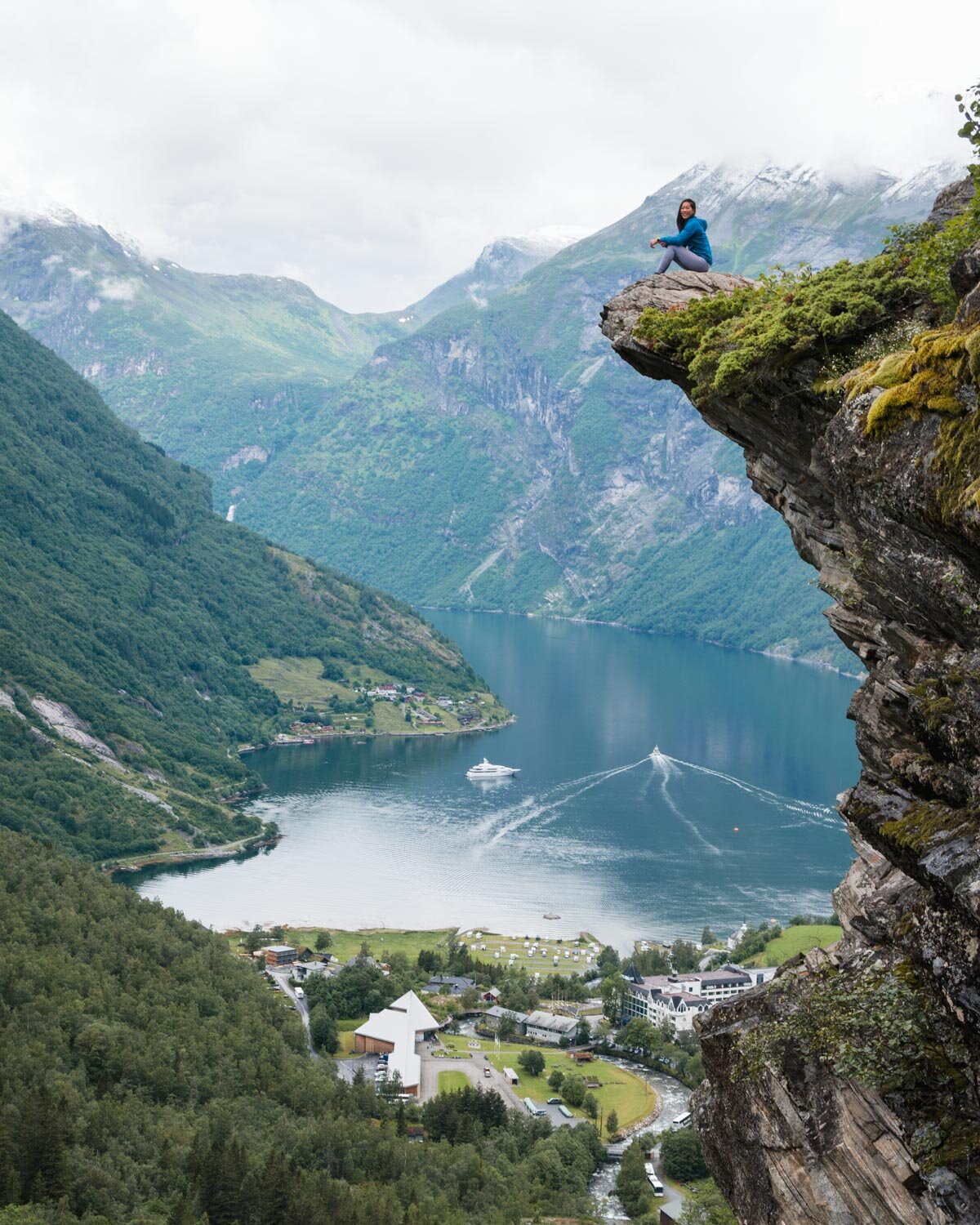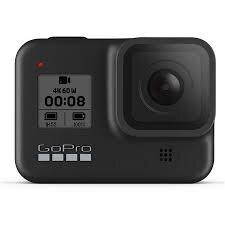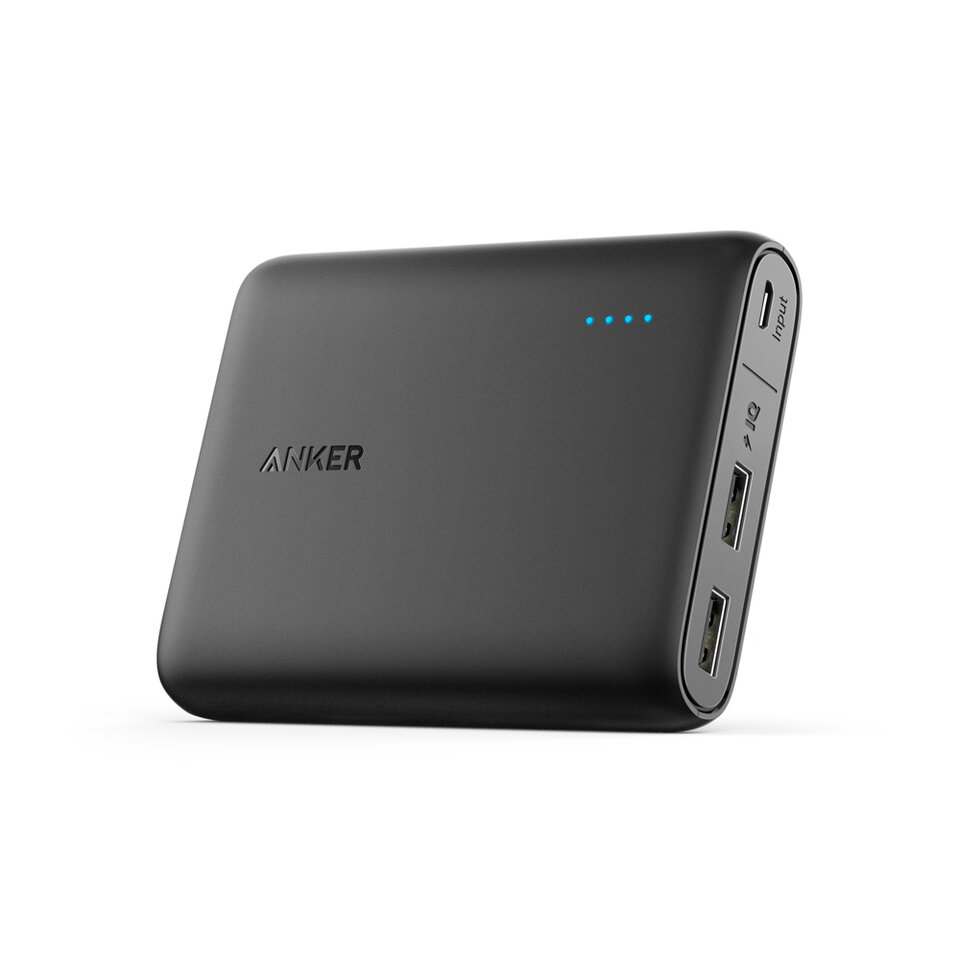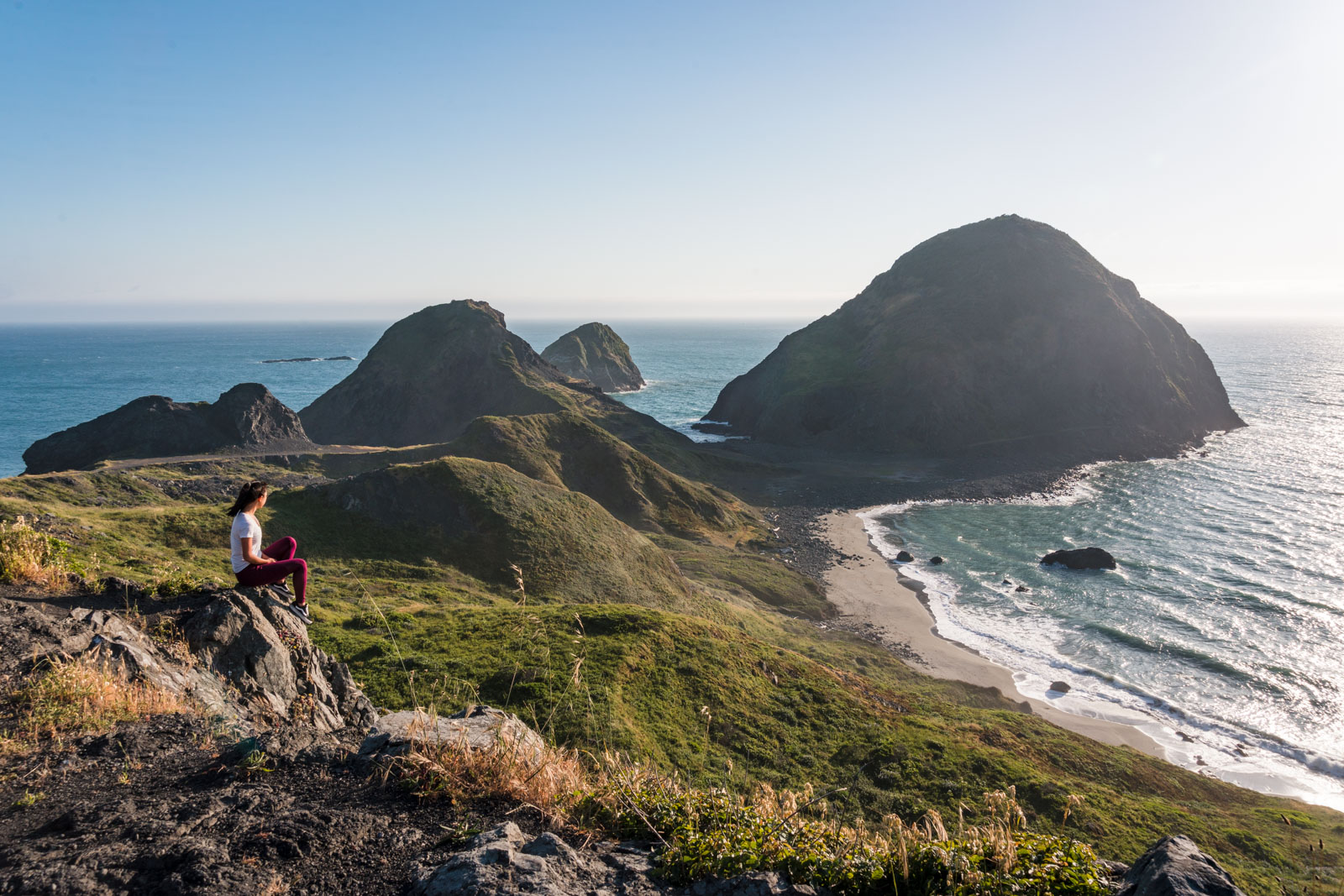When planning this Norway trip, we were overwhelmed with all the things to see and do. Most people who travel to Norway will head to Pulpit Rock and Trolltunga, but we wanted to experience what Norway is famous for - fjords! After many hours of research, here is our four day road trip itinerary focused on nature and the outdoors that would take us through the only two UNESCO World Heritage fjords.
We headed to Bergen to start our road trip along the coast through prime Norwegian fjord territory after spending the first half of our trip exploring the stunning Lofoten islands. Hopefully this post helps you with planning your own Norway trip!
Click here for our northern Lofoten itinerary and our favorite stops along the way
Affiliate disclaimer: please note that this article includes some affiliate links, which means I may earn a small commission on any purchase made - at no additional cost to you. As always, all opinions are my own. Thank you for supporting the work I do to keep creating meaningful content like this for you!
How to get around
Coming from Evenes in the north, we decided to fly to Bergen and start our trip there, since car rental prices were the cheapest in a larger city.
We opted for a one way car rental driving from Bergen up to Ålesund, then taking a flight from Ålesund to Oslo ($115 USD), where we would eventually be flying back to the US. We also considered the train that runs between Bergen and Oslo, as well as other driving itineraries and points of interest, but we decided to maximize our touring time in the fjords and decided to swallow the HEFTY one way car rental fee.
Our five day car rental was only $187 USD, but the fees for a one way rental came out to an additional $450 USD! After we split that cost between the two of us, we decided it was worth not having to spend a whole day backtracking all the way back to Bergen, then taking a long train which would still cost each of us about $130 USD.
I have heard that the Bergen to Oslo train is an incredibly scenic and beautiful train ride, so it is worth looking into!
Where to stay
The mountains behind our rusitc, nordic cottage
We had thought Lofoten was difficult to find accommodations up in the north, but the countryside of the area between Bergen and Ålesund must not be as popular, because there were even fewer options to pick from (and more expensive!).
Be sure to check several sites to see what is out there. We used Booking.com, a site that we liked because of its great prices, free rewards program and great cancellation policies.
We also liked using Airbnb to find more unique and boutique stays.
If booking online through any site, I highly recommend Rakuten for free cash back on your bookings.
Click here for my blog post on saving money and how to I use Rakuten to save on my online purchases!
We booked about four months before our trip, and at that time some of the options we were considering were already getting booked.
Also note that some of the accommodations we booked were designed for more than two people. We spent one night at a place with three additional beds we couldn’t use! It would have been more economical to travel with a larger to split the costs of the car rental and cabins.
Useful tips
As always, don’t forget to download offline Google Maps on your phone for anywhere you think you might be traveling to.
If you are driving, be aware that the highways and roads may be narrower and have slower speed limits than you’re used to. Be sure not to speed even in the tunnels, as there are speed cameras, and speeding tickets are not cheap.
This itinerary uses ferries to cross several fjords. Bring small bills and change for any potential ferry crossings for convenience
Stop by a local grocery store for snacks and food to cook. There weren’t too many options for eating out, so we preferred to just cook ourselves. Many of our accommodations had a kitchen to cook, and we ended up eating a lot of tubed fish, sandwiches, and pasta.
What to do
Although the distance we covered over these several days could have been done in just seven hours as a direct drive, there is so much to see and infinite opportunities for side trips that I’m glad we gave ourselves plenty of room for spontaneous adventures and for simply taking the time to be able to stop and soak in the beauty of the many fjords and quaint villages that we passed through.
Below is a map of our route including points of interest, broken down by day. Feel free to modify based on whatever accommodations you’re able to book in your budget and what sort of activities interest you.
Day 1
Driving: Bergen to Aurlandsvangen (2 hrs 45 mins)
Where we stayed: Airbnb ($106 USD, $55 off your first booking)
Top left to right: fresh seafood at the Bergen fish market, the iconic and colorful Bryggen historical wharf. Bottom left to right: exploring the alleys of Bergen, walking through Bryggen’s wooden structure, Voss waterfall.
Bergen
After flying in the night before and picking up our car rental at the airport, we spent the first half of the day exploring Bergen, Norway’s second largest city.
We first headed to Bryggen, a historical wharf that is also a UNESCO World Heritage site. These are the colorful red and yellow buildings you might have seen in photos of Bergen. You can walk throughout the wooden corridors and get a sense of what this trade port was like back in the 12th century. Restored and converted into a main tourist area now, there are lots of little shops, cafes, and museums to browse through.
After, we walked to the fish market across the bay for lunch. There are endless stalls of seafoods of all types that you can select and they’ll cook/prepare it fresh for you! Since we knew we’d be doing a lot of cooking at home the next couple days on the road, we splurged on a meal of oysters, crab legs, and fresh salmon.. so delicious. We then spent the rest of the day walking around the bustling downtown area.
Note: Be sure to bring an umbrella or rain coat with you. Bergen is known to be rainy - it rains 240 days of the year!
Voss waterfall
After hitting a grocery store and stocking up on snacks and sustenance for the week, we finally hit the road. Our first stop was the impressive Tvindefossen (Voss waterfall), standing at over 400 feet tall.
Nærøyfjord
We then headed onto Gudvangen, where we were treated to our first view looking straight down a fjord! Nærøyfjord is also only one of two UNESCO World Heritage fjords in Norway. When else will I get to experience two different UNESCO sites in a day? Nat Geo has even claimed that Nærøyfjord is the world’s number one natural heritage site. Needless to say, it is stunning.
We originally wanted to kayak here, but since it was raining, we decided to just snap a few photos and cross our fingers for clearer weather to kayak later on in the trip. Continuing on, we reached Aurlandsfjord, another nearby fjord branch, and proceeded to drive up the steep cliffside to get to our Airbnb and wait out the rain.
Day 2
Driving: Aurlandsvangen to Skei (2 hrs 20 mins)
Where we stayed: Stardalen Cottage ($226 USD)
Top left to right: the Stegastein platform, looking out at the fjord from Stegastein lookout, looking back towards Aurlandsvangen. Middle left to right: the view from Mt. Prest hike, rain runoff down the side of a cliff, the Bøyabreen glacier. Bottom left to right: passing by a picturesque dock near Aurlandsvangen, driving through the longest tunnel for cars in the world.
Stegastein lookout
After checking out of our Airbnb, we continued driving up the steep switchbacks to the top of the fjord to the Stegastein lookout, a platform jutting out over Aurlandsfjord. We also stopped to use the bathroom here, and even the bathroom had the most insane view for a public bathroom I think I will ever experience.
Both Aurlandsfjord and Nærøyfjord are branches of the larger Sognefjord, which is actually the longest and deepest fjord in Norway. The fjord here is surrounded by mountains up to 5,900 ft tall, and it was quite a trip seeing the fjord from both the bottom and from the top.
Mt. Prest hike
Stegastein lookout got pretty crowded with all the tour buses, so we continued up the road a little to the Mt. Prest trailhead to see a little more on foot. We didn’t have to hike too long before we emerged on top of the ridge and were treated to the most incredible view of the fjord, dare I say even better than the platform. We hung up here watching the boats travel through the fjord, the large cruise ships diminished by the insanely tall walls.
Lærdalstunnelen tunnel
Once it started raining, we headed back to our car to continue driving. Next up was Lærdalstunnelen tunnel, the longest road tunnel in the world. At 15.2 miles long, the lights inside the tunnel were almost entrancing, seeing them fly by for so long. They even had occasional larger caves of different color to break up the monotony and to pull over for a break.
Bøyabreen glacier
On our way to the cottage we were staying at, we made a side trip to Bøyabreen glacier. Part of Jostedalsbreen National Park, this glacier was our first glimpse of the slow and steady forces that have carved these incredible fjords over the years. On our way to Skei, we also passed Jølstravatnet, a stunning lake that would be perfect to kayak on.
Day 3
Driving: Skei to Hjelle (1hr 45mins)
Where we stayed: Hjelledalen Hyttesenter Cabins ($88 USD)
Top left to right: Briksdalbreen glacier, sheep portraits from the side of the road, yet another scenic road. Bottom left to right: driving by one of many turquoise lakes, driving out of an impressive, lush valley.
Briksdalbreen glacier
Onto another glacier! We parked at the parking lot for cars (you might want to bring coins for the 50 NKR parking fee) and started heading up the trail to the glacier. The trail follows the river upstream passing by several waterfalls and rapids. There is also a bus you can pay to take you a majority of the way. We covered about 1.6 miles with 700 feet of elevation gain before we got to the glacier.
Just like Bøyabreen, Briksdalbreen glacier is an arm off the enormous 188 square miles Jostedalsbreen glacier, the largest glacier in continental Europe! We ate a snack on the shore and stared at the wall of ice flowing over the ridge, trying to imagine the scale of the entire glacier.
If you’re not sick of glaciers you can also head to Kjenndalsbreen glacier, yet another neighboring arm of the Jostedalsbreen glacier.
Loen/Stryn
Loen and Stryn were some of my favorite towns we passed through. Surrounded by towering mountains, the bodies of water here are turquoise and clear. This was another potential kayak/swimming spot on our list, but by this time the afternoon rain had made its way in. Don’t forget to checkout Lovatnet Lake nearby, another serene, aquamarine lake, and there is also the Loen skylift for an aerial view of the town.
Day 4
Driving: Hjelle to Ålesund (3 hrs)
Where we stayed: Airbnb ($130 USD, $65 off your first booking)
Top left to right: in front of a wintry Djupvatnet Lake, on the toll road up to Dalsnibba, a stone bridge on the side of the road. Middle left to right: viewpoint over Geiranger, below Seven Sisters Falls, the viewing platform on the switchbacks leaving Geiranger. Bottom left to right: kayaking around the corner for our first view of the Seven Sisters Falls, the flat water of Geirangerfjord
Dalsnibba Plateau
From our cabin in Hjelle, we decided to ignore Google Maps’ recommendation and take the roundabout way to Geiranger, making the side trip up to Dalsnibba Mountain Plateau. In terms of scenic drives, this day was my favorite.
After paying the 150 NKR toll, we had a lot of fun driving up the windy switchbacks to the platform. Coming from the grassy green valleys that morning, it was a shock to see the landscape change so dramatically into an arctic tundra.
By the time we got to the top 5000 ft up, we had driven into a cloud and there was nothing to see besides the occasional moments when the clouds would part just enough to see how high up we really were. We laughed and clambered back into the car trying not to slip on the icy ground between the gusts of wind.
Geiranger
Next up was the Geiranger overlook. Be sure to fight the tour buses for parking as you won’t want to miss this view. Even though it has rained on us a lot this trip, it made for the most lush and green scenery all around us.
Getting back in the car, before we knew it, we were at the bottom of the windy road and pulling into town. We walked around the many artisan shops downtown before deciding to go for a kayak on Geirangerfjord, the last chance we would get to kayak a fjord this trip.
Kayaking Geirangerfjord
The plan was to paddle to the Seven Sisters Waterfall. We went with Geiranger Kayak Center, which outfitted us with single kayaks, life jackets, and kayak skirts to prevent water from getting our lower halves wet. You might want to bring a drybag if you have a camera (I like the Sea to Summit ones).
It took us about an hour and a half to get there, frequently stopping for photos and several smaller waterfalls on the way. We've seen the fjords from so many different angles, below, above, across, but being on the water was a whole different experience. The water was so calm, and the fjord sounded peacefully quiet.
Eventually we made it to the impressive 1,350 foot waterfall pouring over the cliff, and we paddled as close as we wanted. From here we could even see two other large waterfalls on the opposite wall!
My Garmin Instinct clocked us in at a total of nine miles paddled over two hours and 45 minutes. I highly recommend going for a paddle in a fjord if you can. We aren’t what you consider experienced paddlers, and we were able to manage the occasional large wake when a large boat passes by (turn your kayak perpendicular to the oncoming wave!) and crossing the fjord to see the waterfall just fine.
Ålesund
We stopped for one more view point and one final chance to take in the grandeur of a Norwegian fjord. Geirangerfjord is truly stunning, and I can see why it has been deemed a UNESCO World Heritage site.
We had one more ferry to cross before reaching Ålesund, a port town on the west coast. We were quite tired and picked up some groceries for dinner before cozying up at our Airbnb before our flight out the next morning.
Conclusion
Even though we experienced a lot of rain and moody weather, we both agreed that Norway’s fjords were something that had to be experienced. Driving through, up, over, and ferrying across all the different fjords was an incredible way to be able to experience and appreciate the sheer size and scale of the landscape, and I love how the Norwegians have prioritized preserving how pristine and beautiful their fjords are.
Have you been to Norway? Let me know what your favorite part was in the comments below!
Some of the beautiful photos in this post are by Jacquie Chang
My favorite gear for this adventure:

